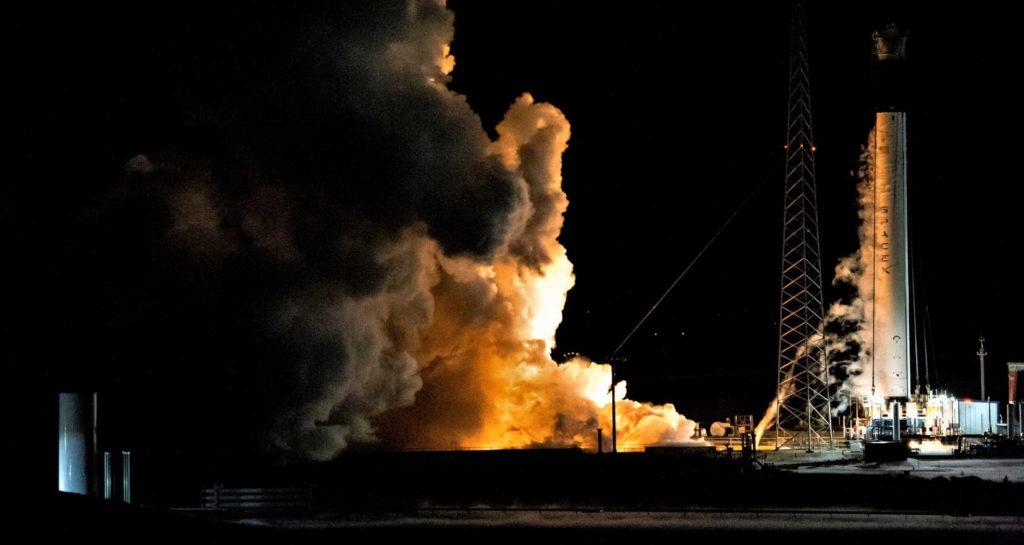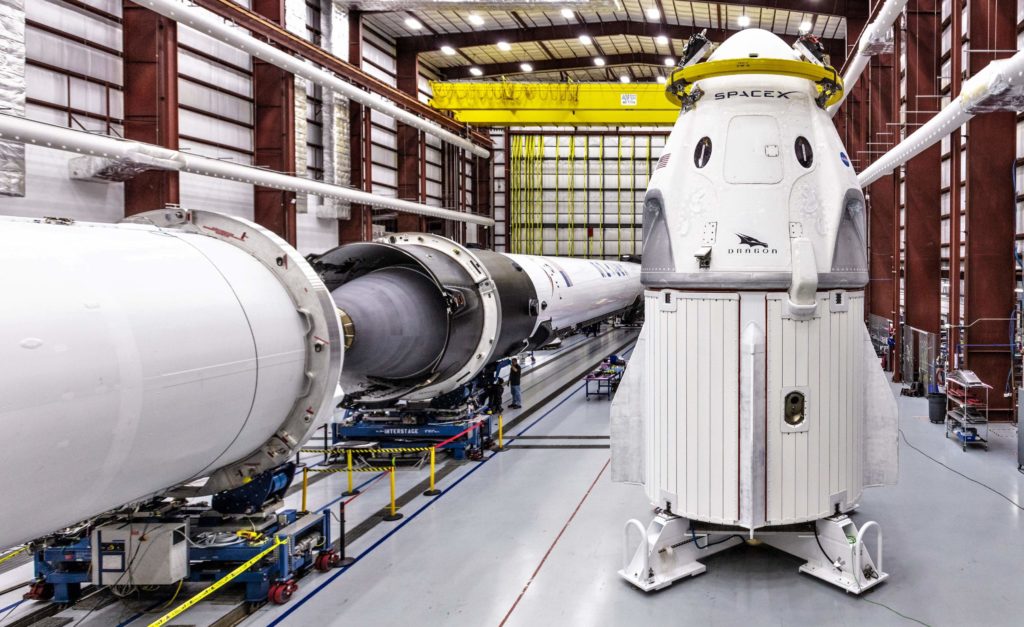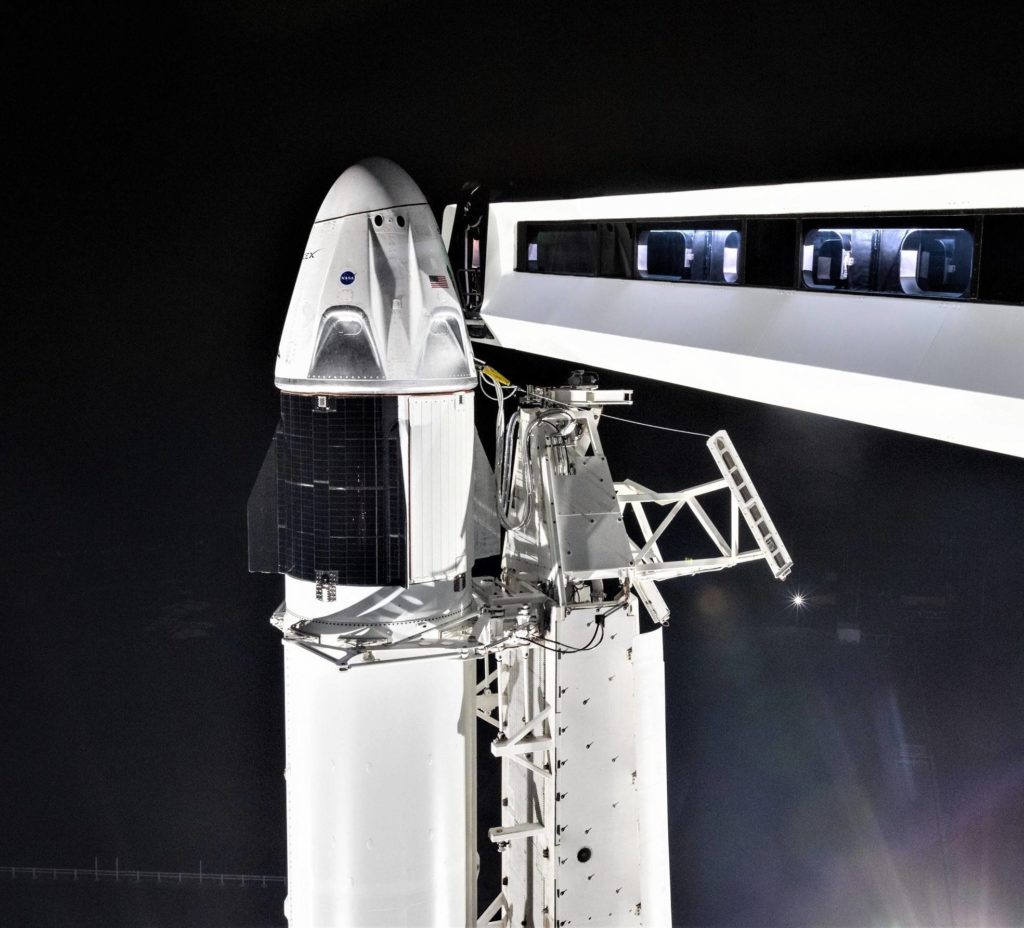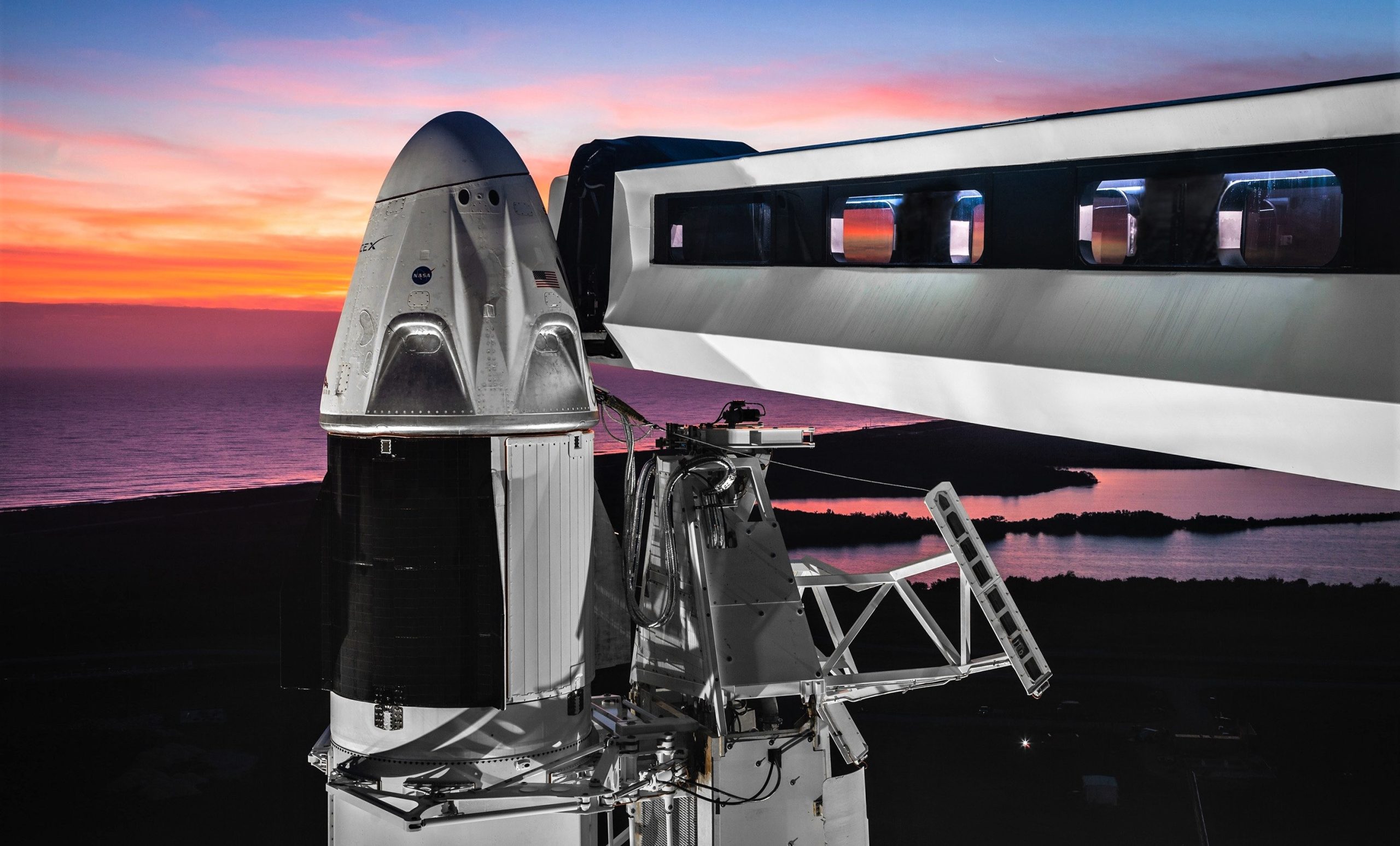
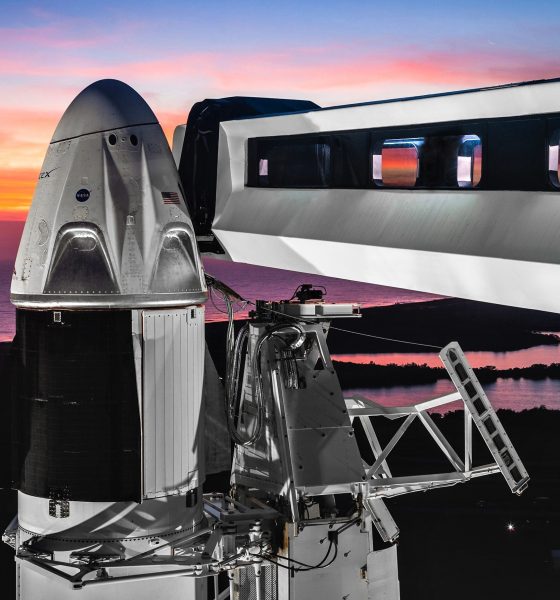
SpaceX
NASA and SpaceX will determine fate of Crew Dragon launch debut this Friday
Although the chances of additional delays are high, the orbital launch debut of SpaceX’s Crew Dragon spacecraft remains stoically targeted for 2:47 am EDT (07:47 UTC) on March 2nd, less than ten days from today.
Known as DM-1, the unproven SpaceX vehicle’s autonomous demonstration mission is a critical milestone along the road to assured US access to the International Space Station (ISS), without which NASA will be forced to continue procuring seats on Russian Soyuz missions with aggressively inflated price tags. If everything goes exactly as planned, a successful DM-1 could translate into the company’s first crewed launch as early as July 2019.
Targeting March 2 for Crew Dragon's first flight to the @Space_Station https://t.co/oJRtDhV3aL pic.twitter.com/lLw1FJHLvI
— SpaceX (@SpaceX) February 6, 2019
Following a nominal mission plan, the first spaceworthy Crew Dragon will dock with the ISS a little over 24 hours after launch (March 3rd) with around 180 kg (400 lb) of cargo for the station’s six-astronaut crew. Five days later (March 8th), Crew Dragon will depart from the ISS, detach its expendable trunk, and reenter Earth’s atmosphere for a soft landing in the Atlantic Ocean. Throughout these operations, ISS astronauts, NASA technicians and operators, and a range of SpaceX employees will conduct extensive observations and tests of the new spacecraft’s performance during all mission phases, ranging from on-orbit docking (a new technology for SpaceX) to Atlantic Ocean recovery operations.
Once the capsule has been extricated from the ocean, SpaceX’s spacecraft refurbishment technicians will be faced with an extraordinary challenge, upon which the date of Crew Dragon’s first crewed launch will directly hinge. Assuming splashdown ops are nominal and Dragon is returned safely to Florida, it’s safe to assume that SpaceX will transport the spacecraft to its Hawthorne factory, at which point its engineers and technicians will have roughly two months to prepare it for another launch. Known as an in-flight abort (IFA) test, SpaceX specifically opted to perform the spacecraft safety check despite the fact that NASA did not explicitly require its commercial providers (Boeing and SpaceX) to do so. SpaceX completed Crew Dragon’s pad abort test – required by NASA – almost four years ago, while Boeing will not perform an in-flight abort before launching astronauts and has its pad abort scheduled no earlier than (NET) May 2019.
- Falcon 9 B1051 has spent several months testing at SpaceX’s McGregor, Texas facilities in preparation for DM-1. (SpaceX)
- The first orbit-ready Crew Dragon spacecraft stands beside its human-rated Falcon 9, December 2018. (SpaceX)
- Crew Dragon shows off its conformal (i.e. curved) solar array while connected to SpaceX’s sleek Crew Access Arm (CAA). (SpaceX)
- SpaceX completed a successful static fire of the first Falcon 9 rated for human flight on January 24th. (SpaceX)
SpaceX’s IFA test is designed to verify that Crew Dragon is capable of safely extricating its astronaut passengers from a failing rocket at the point of peak aerodynamic (and thus mechanical) stress during launch, known as Max Q. Combined with a pad abort demonstration, where the above situation is replicated but with the rocket and spacecraft motionless on the launch pad, the engineering assumption is that successful aborts at both standstill and Max Q verify that a given spacecraft has proven that it can essentially abort and carry astronauts to safety at any point during launch.
“The launch scenario where an abort is initiated during the ascent trajectory at the maximum dynamic pressure (known as max Q) is a design driver for the launch abort system. It dictates the highest thrust and minimum relative acceleration required between Falcon 9 and the aborting Dragon … Dragon would separate from Falcon 9 at the interface between the trunk and the second stage… Under these conditions, the Falcon 9 vehicle would become uncontrollable and would break apart.” – SpaceX FAA permit, 2018
Aside from a boilerplate Merlin Vacuum engine on the second stage, SpaceX’s IFA test is set to fly on real Falcon 9 hardware that will almost certainly be consigned to total destruction at the point of abort, around 90 seconds after launch. SpaceX’s decision to expend an entirely flightworthy Falcon 9 Block 5 rocket – featuring a booster capable of supporting anywhere from 5-100 lifetime missions – is a tangible demonstration of the company’s commitment to crew safety above all else, although NASA will either partially or fully compensate SpaceX for the milestone. Set to occur no earlier than June 2019, the IFA schedule is explicitly constrained by the successful launch and recovery of Crew Dragon after DM-1 – any delays to that mission will likely translate into IFA delays, which will translate into delays for the first crewed mission (DM-2).

SpaceX’s Cargo Dragon engineers and technicians have a solid amount of experience refurbishing the spacecraft for cargo missions to the ISS, although the average turnaround for flight-proven capsules currently stands around 18-24 months, not exactly on the heels of the 2-3 months currently alotted for the first Crew Dragon. Thanks to the fact that the IFA Crew Dragon does not need to be refurbished to the standards of orbital flight for its second launch, it’s at least conceivable that that aspirational schedule is within reach. SpaceX’s first crewed demonstration mission (DM-2) could occur as early as one month after a successful IFA (July 2019), pending the completion of joint NASA-SpaceX readiness reviews.
Known as flight readiness reviews (FRRs), those joint reviews are no less significant for DM-1, even if they likely are underwhelmingly marked by a copious amount of slideshow presentations and sitting around tables in meeting rooms. The purpose of the reviews (at least nominally) is to essentially have SpaceX attempt to convince NASA (as empirically as possible) that they are ready to launch Crew Dragon. According to NASA, that review will end NET 6pm EDT (23:00 UTC) on February 22nd, followed one hour later by an official press conference featuring NASA and SpaceX officials.
Check out Teslarati’s newsletters for prompt updates, on-the-ground perspectives, and unique glimpses of SpaceX’s rocket launch and recovery processes!

Elon Musk
Starlink passes 9 million active customers just weeks after hitting 8 million
The milestone highlights the accelerating growth of Starlink, which has now been adding over 20,000 new users per day.

SpaceX’s Starlink satellite internet service has continued its rapid global expansion, surpassing 9 million active customers just weeks after crossing the 8 million mark.
The milestone highlights the accelerating growth of Starlink, which has now been adding over 20,000 new users per day.
9 million customers
In a post on X, SpaceX stated that Starlink now serves over 9 million active users across 155 countries, territories, and markets. The company reached 8 million customers in early November, meaning it added roughly 1 million subscribers in under seven weeks, or about 21,275 new users on average per day.
“Starlink is connecting more than 9M active customers with high-speed internet across 155 countries, territories, and many other markets,” Starlink wrote in a post on its official X account. SpaceX President Gwynne Shotwell also celebrated the milestone on X. “A huge thank you to all of our customers and congrats to the Starlink team for such an incredible product,” she wrote.
That growth rate reflects both rising demand for broadband in underserved regions and Starlink’s expanding satellite constellation, which now includes more than 9,000 low-Earth-orbit satellites designed to deliver high-speed, low-latency internet worldwide.
Starlink’s momentum
Starlink’s momentum has been building up. SpaceX reported 4.6 million Starlink customers in December 2024, followed by 7 million by August 2025, and 8 million customers in November. Independent data also suggests Starlink usage is rising sharply, with Cloudflare reporting that global web traffic from Starlink users more than doubled in 2025, as noted in an Insider report.
Starlink’s momentum is increasingly tied to SpaceX’s broader financial outlook. Elon Musk has said the satellite network is “by far” the company’s largest revenue driver, and reports suggest SpaceX may be positioning itself for an initial public offering as soon as next year, with valuations estimated as high as $1.5 trillion. Musk has also suggested in the past that Starlink could have its own IPO in the future.
News
SpaceX shades airline for seeking contract with Amazon’s Starlink rival

SpaceX employees, including its CEO Elon Musk, shaded American Airlines on social media this past weekend due to the company’s reported talks with Amazon’s Starlink rival, Leo.
Starlink has been adopted by several airlines, including United Airlines, Qatar Airways, Hawaiian Airlines, WestJet, Air France, airBaltic, and others. It has gained notoriety as an extremely solid, dependable, and reliable option for airline travel, as traditional options frequently cause users to lose connection to the internet.
Many airlines have made the switch, while others continue to mull the options available to them. American Airlines is one of them.
A report from Bloomberg indicates the airline is thinking of going with a Starlink rival owned by Amazon, called Leo. It was previously referred to as Project Kuiper.
American CEO Robert Isom said (via Bloomberg):
“While there’s Starlink, there are other low-Earth-orbit satellite opportunities that we can look at. We’re making sure that American is going to have what our customers need.”
Isom also said American has been in touch with Amazon about installing Leo on its aircraft, but he would not reveal the status of any discussions with the company.
The report caught the attention of Michael Nicolls, the Vice President of Starlink Engineering at SpaceX, who said:
“Only fly on airlines with good connectivity… and only one source of good connectivity at the moment…”
CEO Elon Musk replied to Nicolls by stating that American Airlines risks losing “a lot of customers if their connectivity solution fails.”
American Airlines will lose a lot of customers if their connectivity solution fails
— Elon Musk (@elonmusk) December 14, 2025
There are over 8,000 Starlink satellites in orbit currently, offering internet coverage in over 150 countries and territories globally. SpaceX expands its array of satellites nearly every week with launches from California and Florida, aiming to offer internet access to everyone across the globe.
Currently, the company is focusing on expanding into new markets, such as Africa and Asia.
News
Tesla hints at Starlink integration with recent patent
“By employing polymer blends, some examples enable RF transmission from all the modules to satellites and other communication devices both inside and outside the vehicle.”

Tesla hinted at a potential Starlink internet terminal integration within its vehicles in a recent patent, which describes a vehicle roof assembly with integrated radio frequency (RF) transparency.
The patent, which is Pub. No U.S. 2025/0368267 describes a new vehicle roof that is made of RF-transparent polymer materials, allowing and “facilitating clear communication with external devices and satellites.”
Tesla believes that a new vehicle roof design, comprised of different materials than the standard metallic or glass elements used in cars today, would allow the company to integrate modern vehicular technologies, “particularly those requiring radio frequency transmission and reception.
Tesla has recently filed a US patent application on integrating RF transparent materials into the roof structure.
“facilitating clear communication with external devices and satellites”
Tesla fleet is getting @Starlink connectivity integration soon. LFG @Tesla @elonmusk… pic.twitter.com/bLa8YtPLd1
— Chansoo Byeon (@Chansoo) December 9, 2025
Instead of glass or metallic materials, Tesla says vehicles may benefit from high-strength polymer blends, such as Polycarbonate, Acrylonitrile Butadiene Styrene, or Acrylonitrile Styrene Acrylate.
These materials still provide ideal strength metrics for crashworthiness, stiffness for noise, vibration, and harshness control, and are compliant with head impact regulations.
They would also enable better performance with modern technologies, like internet terminals, which need an uninterrupted signal to satellites for maximum reception. Tesla writes in the patent:
“By employing polymer blends, some examples enable RF transmission from all the modules to satellites and other communication devices both inside and outside the vehicle.”

One of the challenges Tesla seems to be aware of with this type of roof design is the fact that it will still have to enable safety and keep that at the forefront of the design. As you can see in the illustration above, Tesla plans to use four layers to increase safety and rigidity, while also combating noise and vibration.
It notes in the patent that disclosed examples still meet the safety requirements outlined in the Federal Motor Vehicle Safety Standards (FMVSS).
Starlink integrated directly into Tesla vehicles would be a considerable advantage for owners. It would come with a handful of distinct advantages.
Initially, the inclusion of Starlink would completely eliminate cellular dead zones, something that is an issue, especially in rural areas. Starlink would provide connectivity in these remote regions and would ensure uninterrupted service during road trips and off-grid adventures.
It could also be a critical addition for Robotaxi, as it is crucial to have solid and reliable connectivity for remote monitoring and fleet management.
Starlink’s growing constellation, thanks to SpaceX’s routine and frequent launch schedule, will provide secure, stable, and reliable internet connectivity for Tesla vehicles.
Although many owners have already mounted Starlink Mini dishes under their glass roofs for a similar experience, it may be integrated directly into Teslas in the coming years, either as an upgrade or a standard feature.
